Sigma C 100-400 mm f/5-6.3 DG OS HSM
4. Image resolution
Let’s check how the tested lens compares – its performance in the frame centre at 100, 200, 300 and 400 mm shows a graph below.
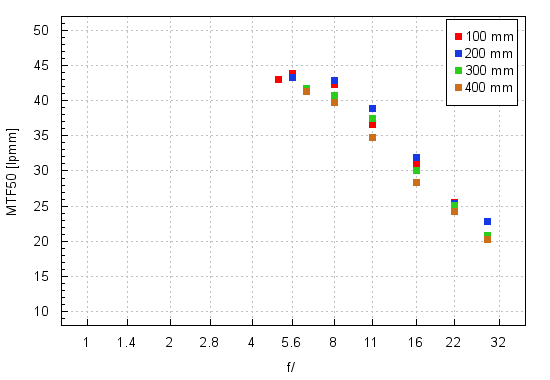
Please Support UsIf you enjoy our reviews and articles, and you want us to continue our work please, support our website by donating through PayPal. The funds are going to be used for paying our editorial team, renting servers, and equipping our testing studio; only that way we will be able to continue providing you interesting content for free. |
- - - - - - - - - - - - - - - - - - - - - - - - - - - - - - - - - - - - - - - - - - - - - - - -
Observing the launch of the new Sigma and noticing its price, lower than the price of the older version of the Canon 100-400 mm at its cheapest, I thought that it would be enough the Sigma reached MTFs just slightly better than the older versions of brand name lenses to be a certain market hit. By thinking so I admit I underestimated the Sigma a bit; I should already have been accustomed to the fact that the amazing fixed focal lengths Art series lenses produced by that company can beat resolution records without any problems.
In a nutshell the Sigma C 100–400 mm f/5–6.3 DG OS HSM, being slower, didn’t have the slightest problems to get results noticeably better than the older 80-400 mm models produced by Nikon and 100-400 mm Canon devices. What’s more, the Sigma didn’t have any problems to reach MTFs noticeably better than those reached by the new Nikkor 80-400 mm VR; it was also slightly better than the new Canon EF 100-400 mm II. Do I have to say anything more?
Let’s check the situation on the edge of the APS-C/DX sensor; an appropriate graph is shown below.
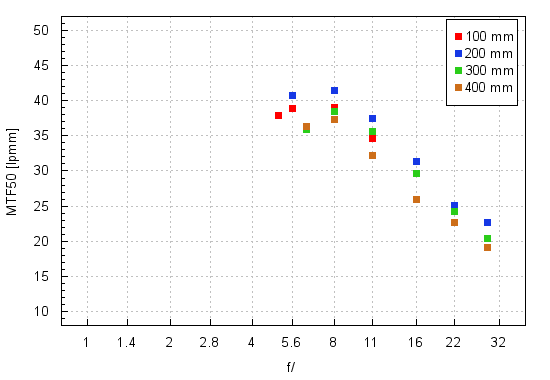
At 200 mm the results are simply sensational, with MTFs noticeably exceeding 40 lpmm. The 100 mm focal length is not much worse. The longer end of range of focal length range shows a similar level, with the resolution results reaching near 37 lpmm. Compared to the Nikkor AF-S 80-400 mm VR the Sigma prevails practically at every focal length. The duel with the Canon 100-400 mm II is more balanced: at the longer end of the focal spectrum you get a draw, at the shorter end the Sigma is better.
Now let’s check the situation on the demanding edge of full frame.
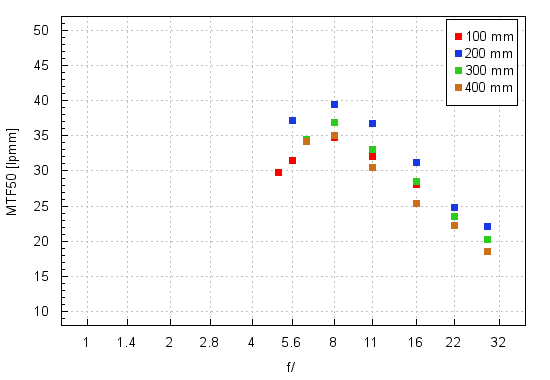
Here you can find the first weak point of the tested lens. A combination of the maximum relative aperture and the shortest focal length provides a result near 30 lpmm so on the borderline of the decency level. Once again the tested lens performs the best at 200 mm where the maximum MTFs are able to reach almost 40 lpmm. The Sigma beats the Nikkor but at many combinations of apertures and focal lengths it is defeated slightly by the Canon 100-400 mm II.
At the end of this chapter, traditionally, we present crops taken from photos of our resolution testing chart, taken from JPEG files.
| Canon 5D MkIII, JPEG, 100 mm, f/5.6 |
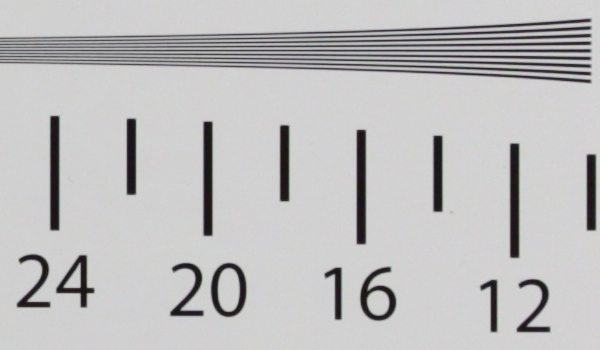 |
| Canon 5D MkIII, JPEG, 400 mm, f/6.3 |
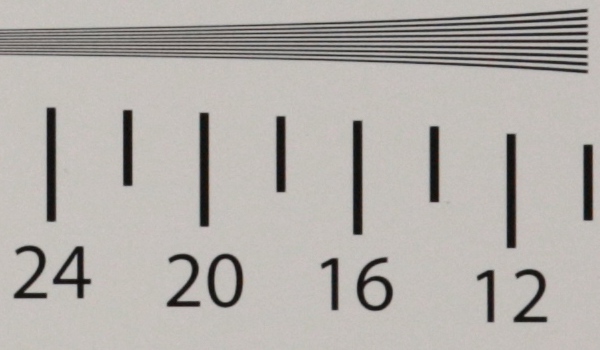 |






